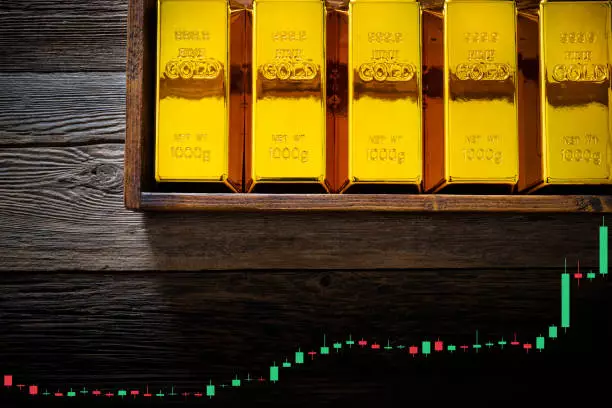In the tumultuous landscape of financial markets, gold (XAU/USD) has proven itself to be a powerful asset, impressively climbing by 19% in the first quarter of 2025. This achievement is particularly striking when juxtaposed with other significant asset classes, which faltered during the same period. The US S&P 500 endured a decline of 4.6%, and Bitcoin plummeted by nearly 12%. The consistently negative trends in these markets underscore the unique appeal of gold, particularly as an alternative investment and a haven during uncertain economic periods.
The capacity of gold to thrive in an environment rife with volatility can be attributed to its intrinsic value and historical significance as a hedge against inflation and geopolitical uncertainties. In stark contrast to the underwhelming performances of the dollar and various equities, gold serves as a safeguard, drawing investors looking for stability and security in their portfolios.
Correction and Bullish Prospects
After reaching a staggering all-time high of $3,500 on April 22, 2025, gold experienced a notable correction, retracting 10% to $3,120 by mid-May. While some may interpret this as a bearish signal, it’s essential to recognize that such fluctuations are characteristic of asset prices, particularly after a significant surge. The robust performance in Q1 hinted at underlying bullish trends, but the retreat can also be seen as a necessary recalibration for sustainable growth.
This correction was largely influenced by the resurgence of the US dollar and an uptick in risk sentiment triggered by a thaw in US-China trade relations. Investors have been eager to reassess their exposure to riskier assets, leading to a shift in focus toward more stable investments like gold. The price drop, however, found support at the 50-day moving average, signaling that a higher low was forming. Technical analysis suggests potential bullish reversals could be on the horizon, particularly if gold can regain momentum and surpass resistance levels around $3,305.
Consumer Sentiment: A Crucial Indicator
The sharp decline in consumer sentiment, as measured by the University of Michigan survey, has raised alarm bells over the health of the US economy. With consumer sentiment having fallen to its lowest levels since June 2022, stagnant purchasing power amidst rising inflation signals a potential economic downturn or lingering stagflation. With inflation expectations also reaching heights not seen since 1981, the implications for consumer spending—and thus, broader economic performance—cannot be overstated.
Concurrently, this economic unease is projected to increase demand for gold as a safe-haven asset. Investors are aware that gold may offer protection against the purchasing power erosion that accompanies rising inflation and weak consumer sentiment. The linkage between consumer perspectives and prospective retail sales becomes vital; as consumer confidence erodes, spending, which primarily fuels economic growth, can stagnate, prompting investors to flock to gold.
Technical Frames and Future Strategies
From a technical perspective, the correction the gold market has experienced recently indicates some intriguing potential for future recoveries. The behavior of the daily Relative Strength Index (RSI) provides essential insights, as the recent support observed at the 44 level suggests that gold could be on the verge of reversing its prior downtrend. When analyzing historical RSI patterns, past occurrences indicate that similar setups often precede bullish movements, suggesting that market participants should closely monitor for a price breakthrough above key resistance levels.
Technical analysts should also be apprised that any failure to sustain support levels around $3,056 could signal a continuation of bearish sentiment, exposing deeper support areas that traders would need to navigate cautiously. Key pivot support levels like $2,955 and the long-term critical support at $2,833—anchored by the 200-day moving average—could become crucial markers for determining future price action.
Overall, gold’s performance reflects more than mere market fluctuations; it embodies a broader narrative concerning economic stability and investor sentiment. As economic indicators signal potential stagnation and inflation concerns loom large, gold’s role as a protective asset becomes increasingly relevant. Investors must not only navigate the immediate fluctuations of gold prices but also embrace the underlying factors influencing its allure. Markets always have ebbs and flows, and those prepared to anticipate and act on these movements may find lucrative opportunities within the gold sector.

